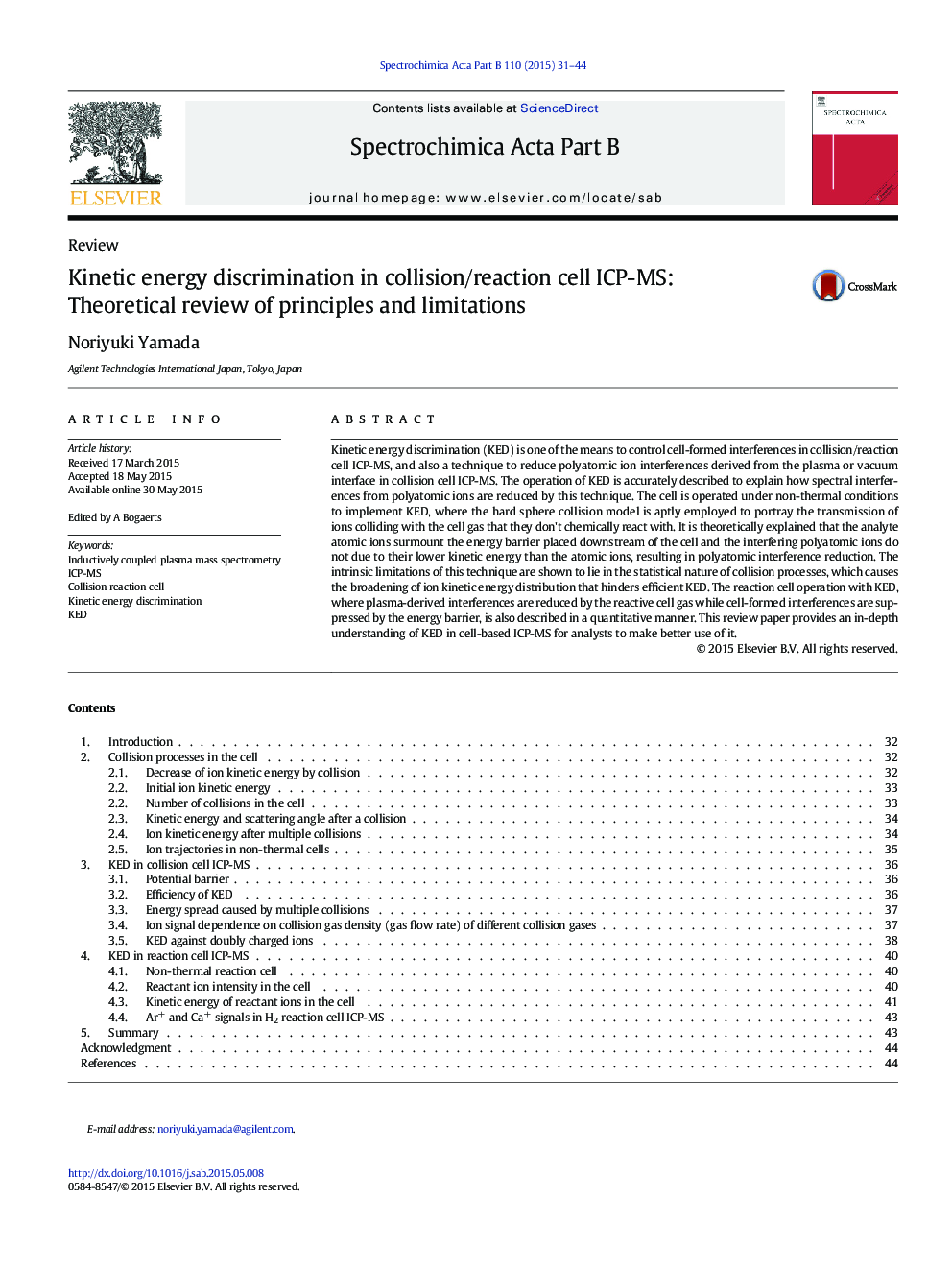| Article ID | Journal | Published Year | Pages | File Type |
|---|---|---|---|---|
| 1239970 | Spectrochimica Acta Part B: Atomic Spectroscopy | 2015 | 14 Pages |
•Hard sphere collision model was employed to describe the polyatomic ion interference reduction by KED.•The intrinsic limitations of KED lies in the statistical nature of collision processes.•It was shown that lighter collision gas is more effective than heavier one for polyatomic ion reduction by KED.•In non-thermal H2 reaction cell ICP-MS, KED does not contribute to the reduction of plasma-based interfering ions.
Kinetic energy discrimination (KED) is one of the means to control cell-formed interferences in collision/reaction cell ICP-MS, and also a technique to reduce polyatomic ion interferences derived from the plasma or vacuum interface in collision cell ICP-MS. The operation of KED is accurately described to explain how spectral interferences from polyatomic ions are reduced by this technique. The cell is operated under non-thermal conditions to implement KED, where the hard sphere collision model is aptly employed to portray the transmission of ions colliding with the cell gas that they don't chemically react with. It is theoretically explained that the analyte atomic ions surmount the energy barrier placed downstream of the cell and the interfering polyatomic ions do not due to their lower kinetic energy than the atomic ions, resulting in polyatomic interference reduction. The intrinsic limitations of this technique are shown to lie in the statistical nature of collision processes, which causes the broadening of ion kinetic energy distribution that hinders efficient KED. The reaction cell operation with KED, where plasma-derived interferences are reduced by the reactive cell gas while cell-formed interferences are suppressed by the energy barrier, is also described in a quantitative manner. This review paper provides an in-depth understanding of KED in cell-based ICP-MS for analysts to make better use of it.
